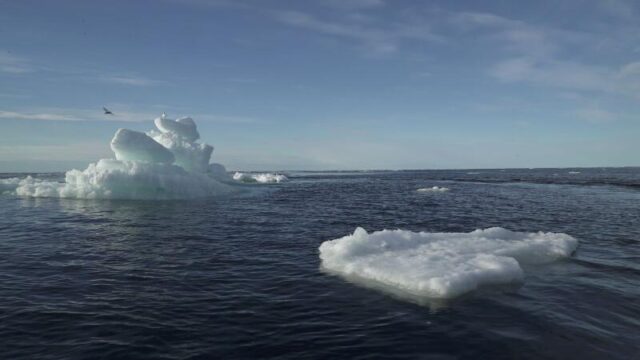Authorities are hoping for an uneventful resolution in the next few days, after initial attempts to free the ship failed.
By Danielle Bochove and Ragnhildur Sigurdardottir
THE grounding of a luxury cruise ship off the coast of Greenland on Monday highlighted the irony of touring the fast-warming Arctic on a vessel powered by fossil fuels, the main culprit in climate change.
But the incident also underscores the recent growth of marine traffic in the region, a trend that raises the risk of accidents and pollution in hard-to-reach places.
Global warming is destroying vast tracts of polar ice, opening previously frozen sea routes through the Arctic for longer periods.
In the case of Greenland – where the Ocean Explorer remains mired in glacial silt in a remote fjord, days from help although not in immediate danger – cruise ship traffic has risen 50% in the past year, to about 600 ships, according to Brian Jensen of the Danish military’s Joint Arctic Command.
That trend is seen across the Arctic. “From the period of 2009 to 2018, ship traffic on a pan-Arctic scale doubled,” said Paul Berkman, lead author of a 2022 report on the subject published by the US National Oceanic and Atmospheric Administration. “Ship traffic is increasing as sea ice is decreasing.”
The impact is being felt on remote ecosystems and communities as ships burning marine diesel, or methane-emitting liquefied natural gas, increasingly crisscross the top of the globe.
Some studies show the carbon footprint of cruise ships, per passenger, is bigger than that of passenger jets. Globally, maritime transport emits more CO2 than Germany.
More ship traffic also means a higher risk of accidents in remote, poorly mapped areas known for harsh and unpredictable weather.
A 2021 report on Arctic marine disasters showed a 42% increase in accidents between 2005 and 2017 north of 58 degrees latitude, which encompasses the Arctic as well as some sub-arctic territory.
The report acknowledged gaps in the data, noting that not all Arctic states provided information.
More than 40 expedition vessels – smaller ships capable of traversing narrow channels and shallow waters – were exploring the Arctic this summer, led by 20 different operators, according to Cruise Industry News.
Popular routes included those across Canada’s Northwest Passage and along the coasts of Greenland, Norway and the Svalbard Archipelago.
Of even greater concern, though, are much larger conventional cruise ships capable of carrying thousands of passengers.
The Icelandic Coast Guard is “very worried” about the rising number of such vessels around Iceland and the Arctic, spokesperson Asgeir Erlendsson said.
“If any of those big ships run into trouble, there are many people on board and a rescue mission can take a long time and needs to involve a lot of people,” he said.
“This requires international cooperation and using resources like the fishing fleet if needed. Rescuing with a helicopter for instance will be very time consuming under such circumstances.”
The Danish ship sent to rescue people on board the Ocean Explorer is not expected to reach the remote Greenland fjord until Friday.
Other countries’ Arctic territories are even larger and more difficult to access.
The Canadian Coast Guard has seven or eight icebreakers available each year to serve 162,000 kilometres of northern coastline, delivering supplies and providing search-and-rescue support.
In the case of the Ocean Explorer, authorities are hoping for an uneventful resolution in the next few days, after initial attempts to free the ship failed.
Its hull is intact, no oil has leaked and, so far, the 206 people on board are safe. Still, it’s a cautionary tale about the potential for disaster in what is still one of the most remote places on Earth.
“Our worst-case scenario is a large cruise vessel with 8,000 to 9,000 people onboard having an emergency in an isolated area,” said Tore Wangsfjord, chief of operations at the Joint Rescue Coordination Centre North-Norway, which handles search-and-rescue operations over an area extending to the North Pole.
Of the Ocean Explorer, he added, “Multiply the number of people on board by 25, and you can imagine the situation.”
Bloomberg’s Brendan Murray and Christian Wienberg contributed to this report.








